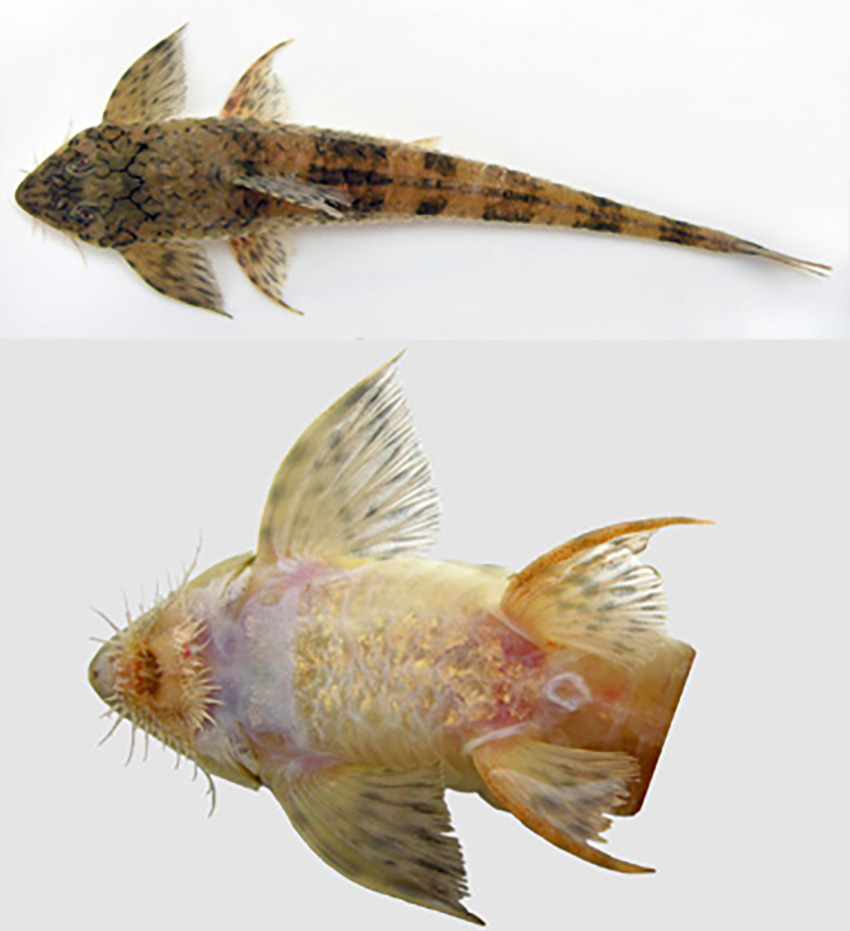new species:
Loricaria luciae Thomas, Rodriguez, Cavallaro, Froehlich & Castro, 2013
published in:
Thomas, M.R., M.S. Rodriguez, M.R. Cavallaro, O. Froehlich & R.M.C. Castro (2013):
Loricaria luciae, a new species of whiptail catfish (Siluriformes: Loricariidae) from the Paraguay and lower Paraná River basins of southeastern South America.
Zootaxa 3745 (3): 365-378
abstract (from publication):
Loricaria luciae, new species, is described from the the rio Paraguay basin of Bolivia, Brazil, and Paraguay, south to its confluence with the rio Paraná in Argentina. It is distinguished from all congeners by the following combination of char-acteristics: pectoral girdle entirely naked or with small isolated plates near base of pectoral fin, post-ural plate at base of caudal fin large (plate length 17.0–20.3% HL), and total lateral plates 32–33 (modally 32). The new species occurs in a variety of habitats ranging from small, seasonally intermittent streams with clear water to large, turbid rivers over sand and mud substrates. It is sympatric with at least three other species of Loricaria in the Paraguay and lower Paraná drainages, including L. apeltogaster Boulenger 1895, L. coximensis Rodriguez et al. 2012, and L. simillima Regan 1904.
distribution (from publication):
Loricaria luciae is currently known from throughout the rio Paraguay basin of Bolivia, Brazil, and Paraguay, south to its confluence with the rio Paraná in Argentina. Most collections of this species are from the Paraguay ecoregion as delineated by Abell et al. (2008), which encompasses the extensive Pantanal wetland complex drained to the south by the rio Paraguay and many of its left-bank tributaries including the Negro, Miranda, Taquari, Piquiri, Cuiabá, Aquidauana, Apá, Ypané, and Tebicuary drainages. Based on material examined in this study, it appears to be less common in right-bank tributaries of the rio Paraguay draining the more arid Chaco ecoregion and in the lower Paraná ecoregion (Abell et al. 2008). Individuals have been collected in flowing water habitats ranging from small, seasonally intermittent streams (arroyos) to large permanent rivers. Since 2000, this species has been collected repeatedly in small order streams with clear water in the upper rio Miranda drainage within the boundaries of the Parque Nacional da Serra da Bodoquena (M. Cavallaro, and O. Froehlich, pers. obs.). In the Aquidaban and Tebicuary drainages, several specimens were collected in and above riffles at depths of 0.3–1.5 m, where the species was reportedly common (J.N. Taylor et al. UMMZ, unpubl. field notes). In the rio Negro at the southern end of the Pantanal wetlands, specimens were collected in black water at the edge of the main river channel in swift current over sand and mud substrates (B. Chernoff, et al. FMNH, unpubl. field notes). In the lower rio Paraná, the holotype was collected with a seine at night along the shore over substrates of sand, silt and mud, at a depth of less than 1.5 m (M. Sabaj Pérez, pers. comm.).

